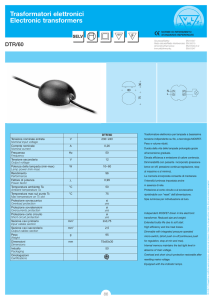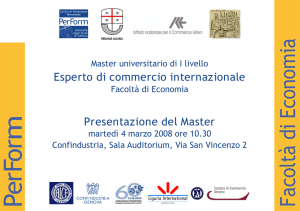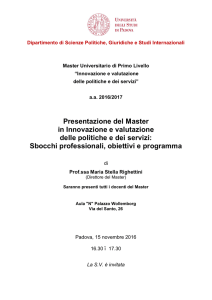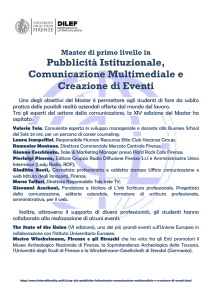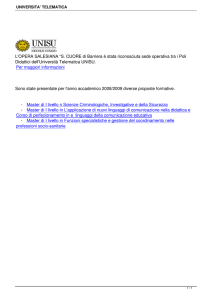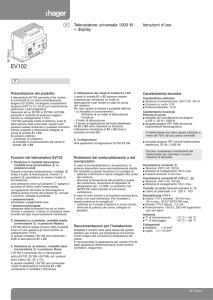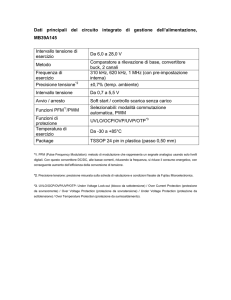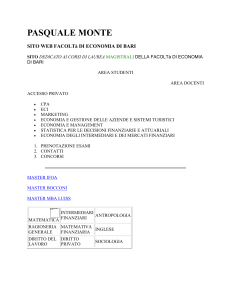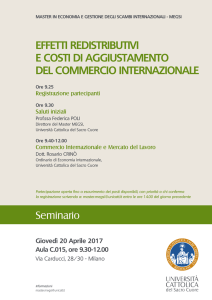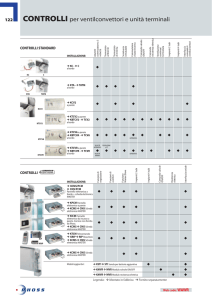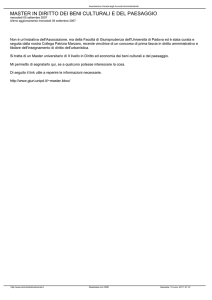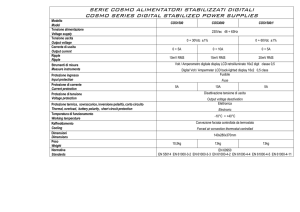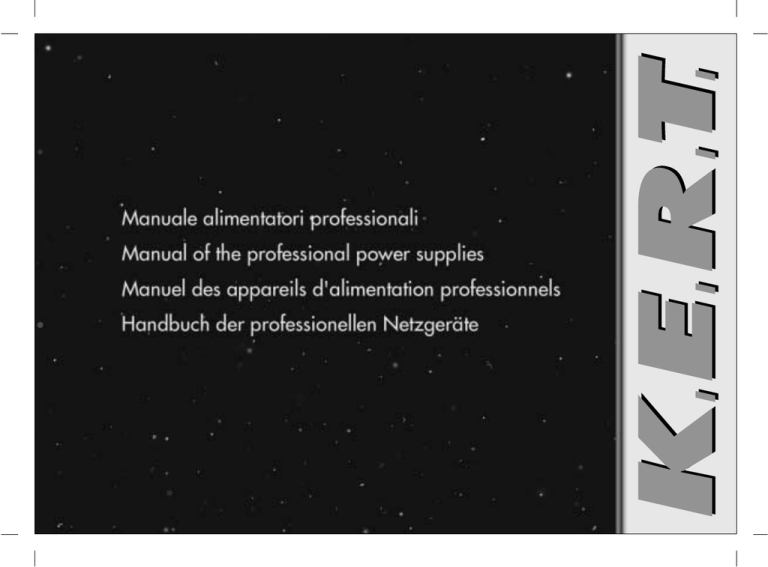
I
PRECAUZIONI PER IL BUON FUNZIONAMENTO DEL VOSTRO STRUMENTO
1. Non mettere lo strumento vicino a fonti di calore
2. La temperatura ambiente non deve superare i 40° C con una umidità max 80%.
3. Tenere lo strumento lontano da fonti magnetiche.
4. Non mettere pesi eccessivi sopra il mobile.
5. Non ostruire le prese di ventilazione
6. Prima di alimentare circuiti è bene scaricare i condensatori.
7. Come tutti gli strumenti digitali è bene far tarare lo strumento una volta l’anno. L’operazione può essere fatta da un
tecnico qualificato, da un centro assistenza autorizzato o direttamente presso la K.E.R.T.
8. Non pulire lo strumento con abrasivi o solventi, usare un panno umido con detergente.
INSTALLAZIONE
a. Scelta del luogo
Gli alimentatori della serie COSMO - SYSTEM sono provvisti di raffredamento forzato, per cui non hanno problemi di funzionamento anche in ambienti con temperatura elevata.
Nonostante ciò DEVONO essere lasciate libere le prese di aerazione per l’entrata e l’uscita dell’aria forzata che sono situate ai lati del mobile in prossimità del pannello di fondo. L’apparecchio è comunque provvisto di un disgiuntore termico
che disconnette l’alimentazione in caso di sovratemperatura.
b. Montaggio
L’apparecchio è fornito già montato e completo di ogni sua parte.
c. Collegamenti elettrici
Il cavo di alimentazione di rete è del tipo EURO STANDARD, la presa è situata sul pannello posteriore
pag. 2
I
VEDUTA FRONTALE COSMO 1500 - 3000 - 1500/1
1
2
3
4
5
6
7
8
9
10
- Interruttore accensione
- Spia abilitazione uscita
- Spia rete
- Negativo uscita
- Massa (GND)
- Positivo uscita
- Pulsante abilitazione uscita
- Pulsante di reset
- Pulsante modalità regolazione OVP
- Regolazione tensione massima OVP
11
12
13
14
15
16
17
18
19
VEDUTA FRONTALE SYSTEM 150 - 300 - 150/1 - 420
- Regolazione fine tensione
- Regolazione fine corrente
- Regolazione corrente
- Regolazione tensione
- Display alfanumerico LCD
- Ventilazione
- Presa alimentazione
- Fusibile rete
- Connettore per controllo esterno DIN/6
1 - Interruttore linea
16 - Prese ventilazione forzata
4 - Uscita negativo
17 - Prese alimentazione
5 - Massa GND
18 - Fusibile linea
6 - Uscita positivo
19 - Connettore per il controllo esterno
11 - Regolazione fine della tensione
DIN/6
12 - Regolazione fine della corrente
38 - Spia tensione uscita
13 - Regolazione principale della corrente
39 - Voltometro CL. 1.5
14 - Regolazione principale della tensione
40 - Amperometro CL. 1.5
N.B. Quando interviene la protezione di polarità (collegamento polarità invertita delle batterie), l’uscita si disabilita. Per ripristinare l’alimentatore, a carico scollegato, si deve
spegnerlo per almeno 10 “.
15
19
14
13
18
39
17
40
19
18
3
17
2
16
11
1
4
5
6
7
8
9
16
12
10
1
pag. 3
38
6
5
4
14
11
13 12
I
VEDUTA FRONTALE SYSTEM 300/2 - 150/2
1 - Interruttore accensione
3 - Spia rete
5 - Massa GND
16 - Presa di ventilazione
17 - Presa di alimentazione
18 - Fusibile rete
19 - Connettore per controllo esterno DIN/6
20 - Commutazione per la lettura della tensione sx/ corrente dx del master
35
21 - Spia di abilitazione uscita master
34
33 32
31
19
36
22 - Morsetto negativo di uscita del master
23 - Morsetto positivo di uscita del master
18
24 - Pulsante di abilitazione di uscita del master
21
25 - Pulsante di abilitazione di uscita dello slave
26 - Morsetto negativo di uscita dello slave
3
27 - Morsetto positivo di uscita dello slave
17
28 - Commutazione per la lettura della tensione sx/corrente dx dello slave
29 - Abilitazione tracking on (dx)
30 - Spia di abilitazione uscita dello slave
20
31 - Strumento analogico V/A dello slave
1
32 - Regolazione della corrente dello slave
33 - Regolazione della tensione dello slave
34 - Regolazione della tensione del master
35 - Regolazione della corrente del master
36 - Strumento analogico V/A del master
N.B. Quando interviene la protezione di polarità (collegamento polarità invertita delle batterie), l’uscita si disabilita. Per ripristinare l’alimentatore, a carico scollegato, si deve
spegnerlo per almeno 10 “.
pag. 4
24 25
22 23
16
27
26
28
30
5
29
I
REGOLAZIONE
Alimentatori con
regolazione
della tensione e
della corrente
Modo tensione
Per impostare l’alimentatore come generatore di tensione costante eseguire le seguenti
operazioni.
a) Abilitare l’uscita (solo per la serie COSMO con DISPLAY LCD e SYSTEM DUALI)
b) Ruotare la regolazione della corrente completamente verso destra
c) Impostare il valore di tensione desiderato a partire dal valore min.
d) Collegare il carico ai morsetti
Modo corrente
Per impostare la corrente massima eragabile in uscita dall’alimentatore procedere nel
seguente modo
a) Abilitare l’uscita (solo per la serie COSMO con DISPLAY LCD e SYSTEM DUALI)
b) Cortocircuitare i morsetti di uscita con un cavo che sopporti almeno la corrente nominale dell’alimentatore
c) Ruotare la regolazione della tensione completamente verso destra
d) Impostare il valore della corrente a partire dal valore min.
e) Levare il cavo di cortocircuito
f) Collegare il carico ai morsetti
pag. 5
I
LA SERIE SYSTEM
Gli alimentatori professionali della serie SYSTEM consentono di soddisfare le più severe esigenze di alimentazione in corrente continua
mediante una singola o doppia uscita regolabile e controllabile. Sono
protetti contro il cortocircuito, l’inversione di polarità, e il sovraccarico.
La serie DUALE permette il collegamento serie e parallelo per impieghi
in linee di montaggio.
Negativo comune slave
Regolazione tensione
slave 0÷8Vdc
Regolazione corrente
master 0÷8Vdc
Caratteristiche degli alimentatori SYSTEM DUALI:
• Abilitazione dell’uscita
➘
➘
Impostando il commutatore 29 nella posizione ON è possibile regolare contemporaneamente, con la manopola di regolazione 34, sia
la tensione del MASTER sia la tensione dello SLAVE allo stesso valore.
3
2
5
Regolazione
corrente slave
0÷8Vdc
6
➘
➘
• Impostazione TRACKING
4
➘
L’uscita viene abilitata o disabilitata mediante il pulsante 24 per il
master e 25 per lo slave
1
➘
Negativo
comune master
Regolazione tensione
master 0÷8Vdc
• Controllo esterno della tensione e della corrente nella serie SYSTEM
150/2 - 300/2
Mediante un connettore posto sul pannello posteriore è possibile,
mediante una tensione esterna variabile da 0 a 8Vdc, controllare
esternamente l’alimentatore in tensione e in corrente.
vista lato esterno connettore DIN 6 POLI
c) la variazione della tensione esterna da 0 ad 8 V comporterà la variazione della tensione e/o della corrente in uscita dell’alimentatore
dalla tensione e/o dalla corrente minima fino alla massima
a) Azzerare la tensione e/o la corrente ruotando le manopole 34 (controllo tensione), 35 (controllo corrente) per il master e/o 33 (controllo tensione), 32 (controllo corrente) per lo slave verso sinistra.
b) Collegare il connettore per il controllo esterno come nella figura
seguente.
pag. 6
I
SERIE COSMO 1500 - 1500/1 - 3000
Gli alimentatori della serie COSMO 1500 - 1500/1 - 3000 sono
supervisionati da un microcontrollore.
Questi alimentatori sono protetti contro l’inversione di polarità, il
corto circuito e le sovratensioni, e permettono il collegamento serie
e parallelo per impieghi in linee di montaggio o dove servono tensioni o correnti elevate.
b) premere il pulsante 9, in questo modo viene automaticamente
scollegato l’alimentatore dal carico e si entra in modalità regolazione OVP vedi figura sotto
SET VMAX = 32.0
OUT DISABLE
Modalità di controllo
L’alimentatore può funzionare sia in modo tensione che in modo
corrente a seconda dell’impiego e/o del tipo di carico a cui è destinato. La modalità di controllo attualmente attiva è indicata dalla
posizione della freccia a sinistra del campo della grandezza controllata, vedi fig. sotto
→
I = 2.50 AMP.
funzionamento in modo tensione
b) regolare la tensione massima girando lentamente verso sinistra la
manopola 10
c) premere ancora il pulsante 9 per uscire dalla fase di regolazione.
N.B. si consiglia di impostare il valore massimo della tensione
quando la regolazione di tensione e della corrente è stata
eseguita, onde evitare l’attivazione della protezione in fase di
regolazione.
V = 13.8 VOLT
V = 13.8 VOLT
→
visualizzazione modalità
regolazione OVP
I = 2.50 AMP.
funzionamento in modo corrente
Protezione sovratemperatura
Se la temperatura dei dissipatori supera gli 80° C viene disattivata
l’uscita e segnalato il seguente messaggio
Abilitazione dell’uscita
L’uscita viene abilitata o disabilitata mediante il pulsante 7
OVERTEMP. PROTECTION
Regolazione tensione massima
PROTEZIONE SOVRATEMPERATURA
L’alimentatore permette di fissare un valore max di tensione al superamento del quale l’uscita viene automaticamente scollegata.
In questo caso attendere che la temperatura diminuisca riattivando l’uscita.
Per impostare il valore massimo di tensione procedere nel seguente modo.
N.B.nei casi in cui interviene la protezione per il verificarsi delle anomalie indicate sopra se l’alimentatore viene spento, viene temporaneamente resettato perciò se alla riaccensione dello stesso l’anomalia
persiste questi si disattiva subito dopo la fase di inizializzazione.
a) ruotare completamente verso destra la manopola 10
pag. 7
I
Protezione sovratensione
Controllo esterno della serie COSMO 1500 - 1500/1 - 3000
SYSTEM 150 - 300 - 150/1 - 420
Quando interviene tale protezione viene visualizzato a display il
seguente messaggio
Mediante un connettore posto sul pannello posteriore (19) è possibile, con una tensione esterna variabile da 0 a 8Vdc, controllare
esternamente l’alimentatore in tensione e in corrente.
OVERVOLTAGE PROTECTION
Controllo esterno della tensione e della corrente
PROTEZIONE SOVRATENSIONE
a) azzerare la tensione e la corrente mediante i potenziometri
11, 12, 13, 14
b) collegare per mezzo di un connettore maschio come disegno
e l’uscita viene scollegata.
Per ripristinare l’alimentatore abbassare la tensione di uscita e resettare premendo il pulsante 8.
Regolazione della corrente
+ 0÷8Vdc
Inversione di polarità
Se si vuole utilizzare l’alimentatore per caricare delle batterie e per
errore si collega la batteria con la polarità sbagliata l’uscita viene
disattivata e viene visualizzato il seguente messaggio
4
POLARITY PROTECTION
3
5
6
INVERSIONE DI POLARITÀ
Per ripristinare l’alimentatore connettere con la polarità corretta e
resettare l’alimentatore con il pulsante 8.
2
1
Negativo comune
Attenzione: la tensione di soglia per l’inversione di polarità è di 0.5
Volt; può quindi accadere che per determinati tipi di carico e per
basse tensioni di alimentazione al momento dell’inserzione si verifichi il superamento di questa soglia e quindi dell’attivazione della
protezione. Si consiglia in questo caso di azzerare la tensione, collegare il carico tramite il pulsante 7 e di regolare la tensione partendo
da zero.
Regolazione tensione
master + 0÷8Vdc
vista lato esterno connettore DIN
c) [1-2] regolazione tensione, [1-4] regolazione corrente
pag. 8
GB
PRECAUTIONS TO TAKE TO ASSURE GOOD OPERATION OF YOUR INSTRUMENT
1. Do not put the instrument close to heat sources.
2. The ambient temperature must not exceed 40° C with a maximum humidity of 80%.
3. Keep the instrument far away from magnetic sources.
4. Do not put excessive weights on top of the cabinet.
5. Do not obstruct the air intakes.
6. It is best to discharge the condensers before feeding the circuits.
7. As is true with all digital instruments, it is best to have the instrument calibrated once a year. This operation can be
performed by a qualified technician, by an authorised assistance centre or directly at the K.E.R.T. factory.
8. Do not clean the instrument with abrasives or solvent. Use a moist rag with detergent.
INSTALLATION
a. Selecting the location
The COSMO - SYSTEM series of power supplies are provided with forced cooling so they do not have any functioning problems, even in environments having high temperatures.
Notwithstanding this feature, the air intakes MUST be left unobstructed for the forced air inlet and outlet that are situated on the sides of the cabinet near the bottom panel. The device is however equipped with a thermal circuit breaker that
disconnects the power supply in the event of overtemperature.
b. Assembly
The device is supplied pre-mounted and complete with all its parts.
c. Electrical connections
The mains power supply cable is the EURO STANDARD type and the outlet is situated on the rear panel.
pag. 9
GB
FRONT VIEW OF THE COSMO 1500 - 3000 - 1500/1
1
2
3
4
5
6
7
8
9
10
- Main switch
- Output enabled pilot lamp
- Mains pilot lamp
- Negative output
- Ground (GND)
- Positive output
- Output enabling push button
- Reset push button
- OVP adjustment mode push button
- OVP maximum voltage adjustment
11
12
13
14
15
16
17
18
19
FRONT VIEW OF SYSTEM 150 - 300 - 150/1 - 420
- Fine voltage adjustment
- Fine current adjustment
- Current adjustment
- Voltage adjustment
- Alphanumerical LCD display
- Ventilation
- Power supply outlet
- Mains input fuse
- DIN/6 external control connector
1 - Main switch
16 - Forced air intakes
4 - Negative output
17 - Power supply outlets
5 - Ground GND
18 - Line fuse
6 - Positive output
19 - DIN/6 external control connector
11 - Fine voltage adjustment
38 - Output voltage pilot lamp
12 - Fine current adjustment
39 - 1.5 class voltmeter
13 - Main current adjustment
40 - 1.5 class ammeter
14 - Main voltage adjustment
Note: When the polarity protection intervenes (reversed polarity connection of the batteries), the output disables. You have to turn it off at least 10 minutes to restore the
power supply with the charge disconnected.
15
19
14
13
18
39
17
40
19
18
3
17
2
16
11
1
4
5
6
7
8
9
16
12
10
1
pag. 10
38
6
5
4
14
11
13 12
GB
FRONT VIEW OF SYSTEM 300/2 - 150/2
1 - Main switch
3 - Mains pilot lamp
5 - Ground GND
16 - Air intake
17 - Power supply outlet
18 - Mains input fuse
19 - DIN/6 external control connector
20 - Switching for reading the master’s voltage (left) and current (right)
35
21 - Master output enabled pilot lamp
34
33 32
31
19
36
22 - Master negative output terminal
23 - Master positive output terminal
18
24 - Master output enabling push button
21
25 - Slave output enabling push button
26 - Slave negative output terminal
3
27 - Salve positive output terminal
17
28 - Switching for reading the slave’s voltage (left) and current (right)
29 - Enabling of tracking on (right)
30 - Slave output enabled pilot lamp
20
31 - Slave analogue V/A instrument
1
32 - Slave current adjustment
33 - Slave voltage adjustment
34 - Master voltage adjustment
35 - Master current adjustment
36 - Master analogue V/A instrument
Note: When the polarity protection intervenes (reversed polarity connection of the batteries), the output disables. You have to turn it off at least 10 minutes to restore the
power supply with the charge disconnected.
pag. 11
24 25
22 23
16
27
26
28
30
5
29
GB
ADJUSTMENT
Power supplies with
voltage and current
adjustment
Voltage mode
To set up the power supply as a generator of constant voltage, perform the following
operations.
a) Enable the output
(only for the COSMO series with LCD DISPLAY and SYSTEM DUALI)
b) Turn the current adjustment knob all the way to the right
c) Set the desired voltage value starting from the minimum value
d) Connect the charge to the terminals
Current mode
To set up the maximum deliverable current exiting from the power supply, follow these
instructions:
a) Enable the output (only for the COSMO series with LCD DISPLAY and SYSTEM DUALI)
b) Short-circuit the output terminals with a cable that supports at least the power supply’s
rated current
c) urn the voltage adjustment knob all the way to the right
d) Set the current value starting from the minimum value
e) Remove the short-circuit cable
f) Connect the charge to the terminals
pag. 12
GB
THE SYSTEM SERIES
The professional power supplies making up the SYSTEM series satisfy
the most demanding requirements of direct current power supply by
means of a single or double output that is adjustable and controllable.
They are protected against short-circuit, polarity reversal and overload.
The DUALE series permits connection in series or in parallel so they can
be used in assembly lines.
Common slave negative
Slave voltage adjustment
0÷8V DC
Master current adjustment
0÷8V DC
Features of the SYSTEM DUALI power supplies:
• Enabling of output
➘
➘
By setting the commutator 29 in the ON position, it is possible to
simultaneously adjust both the MASTER’s voltage and the SLAVE’s
voltage at the same value with the adjustment knob 34.
3
2
5
Slave current
adjustment
0÷8V DC
6
➘
➘
TRACKING set-up
4
➘
The output is enabled or disabled by pressing the push button 24
for the master and 24 for the slave.
1
➘
Common master
negative
Master voltage adjustment
0÷8V DC
External control of the voltage and current in the
SYSTEM 150/2 - 300/2 series
By using a connector located on the rear panel it is possible to
externally control the voltage and the current of the power supply
through an external voltage that is variable from 0 to 8V DC.
External side view of DIN 6 POLE connector
c) the variation of the external voltage from 0 to 8 V will entail the variation of the power supply’s output voltage and/or current from the
minimum voltage and/or current up to the maximum.
a) Reset the voltage and/or the current to zero by turning the knob
34 (voltage control) and 35 (current control) for the master and/or
33 (voltage control) and 32 (current control) for the slave to the left.
b) Connect the external control connector as shown in the following
illustration.
pag. 13
GB
COSMO SERIES 1500 - 1500/1 - 3000
The COSMO 1500 - 1500/1 - 3000 series of power supplies are
supervised by a microcontroller. These power supplies are protected
against polarity reversal, short-circuit and overvoltage and can be
connected in series and in parallel so they can be used in assembly
lines or wherever high voltage and current are required.
b) press the push button 9; by doing this, the power supply is automatically disconnected from the load and enters into the OVP
adjustment mode, as shown in the illustration below.
SET VMAX = 32.0
OUT DISABLE
Control mode
The power supply can work both in voltage mode and in current
mode, depending on the use and/or the type of load it is intended
for. The currently active control mode is shown by the position of the
arrow to the left of the controlled quantity field. Refer to the illustration below.
OVP adjustment mode
display
b) adjust the maximum voltage by slowly turning the knob 10 to the
left
c) press the push button 9 again to exit the adjustment phase.
→
I = 2.50 AMP.
operation in voltage mode
Note: we recommend you set the maximum voltage value when
the voltage and current adjustments have already been
performed so as to avoid activation of the protection during
the adjustment phase.
V = 13.8 VOLT
V = 13.8 VOLT
→
I = 2.50 AMP.
operation in current mode
Overtemperature protection
If the temperature of the dissipators exceeds 80°C, the output is
disabled and the following message is given:
Enabling the output
The output is enabled or disabled by pressing the push button 7.
OVERTEMP. PROTECTION
Adjusting the maximum voltage
The power supply lets you set a maximum voltage value in excess of
which the output is automatically disconnected..
In the event this occurs, wait for the temperature to lower and reactivation
of the output.
To set the maximum voltage value,
follow these instructions.
Note: in those cases where the protection intervenes to ascertain the
above-mentioned anomalies if the power supply is switched off, it is
temporarily reset; therefore, if the anomaly persists when the power
supply comes back on, it deactivates after the initialisation phase.
a) turn the knob 10 all the way to the right
pag. 14
GB
Overvoltage protection
External control of the COSMO 1500 - 1500/1 - 3000
SYSTEM 150 - 300 - 150/1 - 420 series
The following message is shown on the display when this protection
intervenes
Through a connector located on the rear panel (19), it is possible to
externally control the voltage and the current of the power supply
with an external voltage varying from 0 to 8V DC.
External control of the voltage and current
OVERVOLTAGE PROTECTION
a) reset the voltage and current to zero with the potentiometers 11,
12, 13 and 14
b) connect it by using a male connector as shown in the drawing
and the output is disconnected.
To restore the power supply, lower the output voltage and reset by
pressing the push button 8.
Current adjustment
0÷8V DC
Polarity reversal
If you want to use the power supply to charge batteries and you
mistakenly connect the battery with the wrong polarity, the output
is disconnected and the following message is displayed
4
3
POLARITY PROTECTION
To restore the power supply, connect the correct polarity and reset
the power supply with the push button 8.
5
6
2
1
Common negative
Warning: the threshold voltage for polarity reversal is 0.5 V. It is therefore possible that for certain types of load and for low power supply voltages, you will find that the threshold is exceeded and hence
the protection is activated when it is switched on. In this event, we
recommend you reset the voltage to zero, connect the load by pressing push button 7 and adjust the voltage starting from zero.
Master voltage adjustment
0÷8V DC
external side view of the DIN connector
c) [1-2] voltage adjustment, [1-4] current adjustment
pag. 15
F
PRÉCAUTIONS POUR LE FONCTIONNEMENT CORRECT DE VOTRE INSTRUMENT
1. Ne pas mettre l'instrument près d'une source de chaleur
2. La température ambiante ne doit pas dépasser 40°C. Avec une humidité relative max. de 80%..
3. Garder l'instrument loin de sources magnétiques.
4. Ne pas mettre de poids excessifs sur le meuble.
5. Ne pas boucher les prises de ventilation
6. Avant d'alimenter les circuits, il vaut mieux décharger les condensateurs
7. Comme tous les instruments numériques, il est préférable de calibrer l'instrument une fois par an. L'opération peut
être faite par un technicien qualifié, par un centre d'assistance autorisé ou directement chez K.E.R.T.
8. Ne pas nettoyer l'instrument avec des produits abrasifs ou des solvants, utiliser un chiffon humide avec un détergent.
INSTALLATION
a. Choix du lieu
Les alimentateurs de la série COSMO-SYSTEM sont munis de refroidissement forcé, ils n'ont donc pas de problèmes de
fonctionnement même à des températures élevées.
Malgré cela les prises d'aération, placées sur les côtés du meuble près du panneau du fond DOIVENT être laissée libres,
pour l'entrée et la sortie de l'air forcé. L'appareil est toutefois muni d'un disjoncteur thermique qui déconnecte l'alimentation en cas de surcharge de température.
b. Montage
L'appareil est fourni déjà monté et complet.
c. Connexions électriques
Le câble d'alimentation de réseau est de type EURO STANDARD, la prise est située sur le panneau postérieur.
pag. 16
F
VUE FRONTALE COSMO 1500 - 3000 - 1500/1
1
2
3
4
5
6
7
8
9
10
- Interrupteur allumage
- Témoin activation sortie
- Témoin réseau
- Pôle négatif sortie
- Masse (GND)
- Pôle positif sortie
- Bouton activation sortie
- Bouton de réinitialisation
- Bouton modalité réglage OVP
- Réglage tension maximum OVP
11
12
13
14
15
16
17
18
19
VUE FRONTALE SYSTEM 150 - 300 - 150/1 - 420
- Réglage fin tension
- Réglage fin courant
- Réglage courant
- Réglage tension
- Visu alphanumérique LCD
- Ventilation
- Prise alimentation
- Fusible réseau
- Connecteur pour contrôle externe DIN/6
1 - Interrupteur ligne
16 - Prise ventilation forcée
4 - Sortie pôle négatif
17 - Prise alimentation
5 - Masse GND
18 - Fusible ligne
6 - Sortie pôle positif
19 - Connecteur pour contrôle externe
11 - Réglage fin de la tension
DIN/6
12 - Réglage fin du courant
38 - Témoin tension sortie
13 - Réglage principal du courant
39 - Voltmètre CL.1.5
14 - Réglage principal de la tension
40 - Ampèremètre CL. 1.5
N.B. Quand la protection de polarité intervient (connexion polarité inversée des batteries),
la sortie est désactivée. Pour réhabiliter l'alimentateur, à charge déconnectée, il faut
l'éteindre pendant au moins 10".
15
19
14
13
18
39
17
40
19
18
3
17
2
16
11
1
4
5
6
7
8
9
16
12
10
1
pag. 17
38
6
5
4
14
11
13 12
F
VUE FRONTALE SYSTEM 300/2 - 150/2
1 - Interrupteur allumage
3 - Témoin réseau
5 - Masse GND
16 - Prise de ventilation
17 - Prise d'alimentation
18 - Fusible réseau
19 - Connecteur contrôle externe DIN/6
20 - Commutateur pour la lecture de la tension gauche/courant droit du master
35
21 - Témoin d'activation sortie master
34
33 32
31
19
36
22 - Borne négative de sortie du master
23 - Borne positive de sortie du master
18
24 - Bouton d'activation de sortie du master
21
25 - Bouton d'activation de sortie du slave
26 - Borne négative de sortie du slave
3
27 - Borne positive de sortie du slave
17
28 - Commutation pour la lecture de la tension gauche/courant droit du slave
29 - Activation tracking on (droit)
30 - Témoin d'activation sortie du slave
20
31 - Instrument analogique V/A du slave
1
32 - Réglage du courant du slave
33 - Réglage de la tension du slave
34 - Réglage de la tension du master
35 - Réglage du courant du master
36 - Instrument analogique V/A du master
N.B. Quand la protection de polarité intervient (connexion polarité inversée des batteries),
la sortie est désactivée. Pour réhabiliter l'alimentateur, à charge déconnectée, il faut
l'éteindre pendant au moins 10".
pag. 18
24 25
22 23
16
27
26
28
30
5
29
F
RÉGLAGE
Alimentateurs avec
réglage de la tension
et du courant
Mode tension
Pour prérégler l'alimentateur comme générateur de tension constant, effectuer les opérations suivantes.
a) Activer la sortie (seulement pour la série COSMO avec VISU LCD et SYSTEM DUALI)
b) Tourner le réglage du courant complètement vers la droite
c) Prérégler la valeur de tension désirée à partir de la valeur min.
d) Connecter la charge aux bornes
Mode courant
Pour prérégler le courant maximum en sortie de l'alimentateur procéder de la façon suivante:
a) Activer la sortie (seulement pour la série COSMO avec VISU LCD et SYSTEM DUALI)
b) Court-circuiter les bornes de sortie avec un câble qui tienne au moins le courant nominal de l'alimentateur
c) Tourner le réglage de la tension complètement vers la droite
d) Prérégler la valeur du courant à partir de la valeur min.
e) Enlever le câble de court-circuit
f) Connecter la charge aux bornes
pag. 19
F
LA SÉRIE SYSTEM
Les alimentateurs professionnels de la série SYSTEM permettent de satisfaire les exigences d'alimentations les plus sévères en courant continu à
travers une sortie simple ou double réglable et contrôlable. Ils sont
protégés contre les courts-circuits, l'inversion de polarité et les surcharges. La série DUALE permet le raccordement série et parallèle pour des
utilisations en ligne de montage.
Pôle négatif commun slave
Réglage tension slave
0÷8Vdc
Réglage courant
master 0÷8Vdc
Caractéristiques des alimentateurs SYSTEM DUALI:
• Activation de la sortie
3
➘
➘
Si l'on prérègle le commutateur 29 dans la position ON, on peut
régler en même temps, à l'aide du bouton de réglage 34, la tension
du MASTER ainsi que celui du SLAVE sur la même valeur.
2
5
Réglage
courant slave
0÷8Vdc
6
➘
➘
• Préréglage Tracking
4
➘
La sortie est activée ou désactivée à l'aide du bouton 24 pour le
master et 25 pour le slave
1
➘
Réglage commun
master
Réglage tension master
0÷8Vdc
• Contrôle externe de la tension et du courant dans la série SYSTEM
150/2 - 300/2
A l'aide du connecteur placé sur le panneau postérieur, on peut,
avec une tension externe qui varie de 0 à 8Vdc, contrôler extérieurement l'alimentateur en tension et courant.
Vue côté externe connecteur DIN 6 PôLES
c) la variation de la tension externe de 0 à 8 V entraînera la variation de
la tension et/ou du courant en sortie de l'alimentateur de la tension
et/ou du courant minimum jusqu'au maximum.
a) Mettre à zéro la tension et/ou le courant en tournant les boutons
34 (contrôle tension), 35 (contrôle courant) pour le master et/ou 33
(contrôle tension), 32 (contrôle courant) pour le slave vers la gauche.
b) Relier le connecteur pour le contrôle externe comme dans la figure suivante.
pag. 20
F
SÉRIE COSMO 1500 - 1500/1 - 3000
Les alimentateurs de la série COSMO 1500 - 1500/1 - 3000 sont surveillés par un microcontrôleur.
Ces alimentateurs sont protégés contre l'inversion de polarité, les
courts-circuits et les surcharges de tension, et permettent la connexion série et parallèle en cas de lignes de montage ou de nécessité de tensions et courants élevés.
b) presser sur le poussoir 9, l'alimentateur est ainsi automatiquement déconnecté de la charge et on entre en modalité réglage
OVP voir figure ci-dessous
SET VMAX = 32.0
OUT DISABLE
Modalités de contrôle
L'alimentateur peut fonctionner soit en mode tension qu'en mode
courant suivant l'utilisation et/ou le type de charge auquel il est
destiné. La modalité de contrôle actuellement activée est indiquée
par la position de la flèche à gauche de la zone de la grandeur contrôlée, voir fig. ci dessous.
→
I = 2.50 AMP.
fonctionnement en mode tension
b) régler la tension maximum en tournant lentement vers la gauche
le bouton 10
c) presser encore le poussoir 9 pour sortir de la phase de réglage.
N.B. on conseille de prérégler la valeur maximum de la tension
quand le réglage de la tension et du courant sont effectués,
afin d'éviter l'activation de la protection en phase de réglage.
V = 13.8 VOLT
V = 13.8 VOLT
→
visualisation modalité
réglage OVP
I = 2.50 AMP.
fonctionnement en mode courant
Protection de surcharge de température
Si la température des dissipateurs dépasse 80°C, la sortie est désactivée et le message suivant est affiché
Activation de la sortie
La sortie est activée ou désactivée à l'aide du bouton 7
OVERTEMP. PROTECTION
Réglage tension maximum
PROTECTION SURCHARGE DE TEMPÉRATURE
L'alimentateur permet de fixer une valeur max de tension; si elle est
dépassée la sortie est automatiquement déconnectée.
Dans ce cas attendre que la température diminue en réactivant la sortie.
Pour prérégler la valeur maximum de tension procéder de la façon
suivante.
N.B.Quand la protection intervient à cause des anomalies susdites, si l'alimentateur est éteint, il est temporairement réinitialisé, par conséquent si, lorsqu'il est réallumé, l'anomalie persiste, celui-ci se désactive tout de suite après la phase d'initialisation.
a) tourner complètement vers la droite le bouton 10
pag. 21
F
Protection surcharge de tension
Contrôle externe de la série COSMO 1500 - 1500/1 - 3000
SYSTEM 150 - 300 - 150/1 - 420
Quand cette protection intervient, la visu affiche le message suivant:
A l'aide d'un connecteur placé sur le panneau postérieur (19) on
peut, avec une tension externe variable de 0 à 8Vdc, contrôler extérieurement l'alimentateur de tension et courant.
OVERVOLTAGE PROTECTION
Contrôle externe de la tension et du courant
PROTECTION SURCHARGE DE TENSION
a) mettre à zéro la tension et le courant à l'aide des potentiomètres:
11, 12, 13, 14
b) connecter à l'aide d'un connecteur mâle suivant le dessin
Et la sortie est déconnectée
Pour réhabiliter l'alimentateur, baisser la tension de sortie et réinitialiser en pressant sur le poussoir 8.
Réglage du courant
+ 0÷8Vdc
Inversion de polarité
Si l'on veut utiliser l'alimentateur pour charger des batteries et que
par erreur on connecte la batterie avec la mauvaise polarité, la sortie est désactivée et le message suivant est affiché:
4
POLARITY PROTECTION
3
5
6
INVERSION DE POLARITÉ
Pour réhabiliter l'alimentation, connecter avec la bonne polarité et réinitialiser l'alimentateur avec le poussoir 8.
2
1
Pôle négatif commun
Attention: La tension de seuil pour l'inversion de polarité est de 0.5
Volts; il peut donc arriver que pour certains types de charges et pour
les basses tensions d'alimentation au moment de l'introduction, ce
seuil soit dépassé et la protection est donc activée. On conseille
dans ce cas de mettre la tension à zéro, connecter la charge à l'aide
du poussoir 7 et régler la tension en partant de zéro.
Réglage tension master
+ 0÷8Vdc
Vue côté externe connecteur DIN
c) [1-2] réglage tension, [1-4] réglage courant
pag. 22
D
VORSICHTSMASSNAHMEN ZUR GEWÄHRLEISTUNG DER FUNKTIONSTÜCHTIGKEIT DES GERÄTS
1. Das Gerät nicht in der Nähe von Wärmequellen aufstellen.
2. Die Raumtemperatur sollte nicht höher als 40°C betragen, die maximale Luftfeuchtigkeit 80%.
3. Das Gerät nicht in der Nähe von elektromagnetischen Quellen aufstellen.
4. Keine übermäßig großen Gewichte auf dem Gehäuse abstellen.
5. Die Lüftungsöffnungen freihalten.
6. Vor dem Einschalten der Stromzfuhr erst die Kondensatoren ablassen.
7. Wie alle digitalen Geräte sollte auch dieses Instrument einmal pro Jahr geeicht werden. Dieser Eingriff kann von
einem qualifizierten Techniker, von einer zugelassenen Kundendienststelle oder von der Fa. K.E.R.T.
selbst durchgeführt werden.
8. Das Gerät nicht mit Scheuer-oder Lösungsmitteln reinigen, sondern nur mit einem feuchten Tuch und Reinigungsmittel.
INSTALLATION
a. Platzwahl
Die Speiser der Serie COSMO - SYSTEM sind zwangsbelüftet und Können deshalb auch problemlos bei hohen
Umgebungstemperaturen eingesetz werden.
Trotzdem MüSSEN die Lüftungsöffnungen frei gehalten werden, damit die Luft des Zwangsbelüftungssystems ein- und
austreten kann. Diese Öffnungen sind an der Seite des Gehäuses in Bodennähe angeordnet. Das Gerät ist jedoch auch
mit einem Auftrenner ausgestattet, dass die Stromversorgung bei Überhitzung abschaltet.
b. Montage
Das Gerät wird vollständing montiert geliefert.
c. Stromanschlüsse
Für den Anschluss an das Stromnetz wird ein Kabel von Typ EURO STANDARD verwendet; die Buchse ist an der Rückseite
angeordnet.
pag. 23
D
VORDERANSICHT COSMO 1500 - 3000 - 1500/1
1
2
3
4
5
6
7
8
9
10
- Schalter zum Einschalten
- Anzeigelampe Fregabe Ausgang
- Anzeigelampe Stromnetz
- Negativer Ausgang
- Masse (GND)
- Positiver Ausgang
- Taste Freigabe Ausgang
- Rückstelltaste
- Taste OVP- Reguliermodus
- Regulierung Maximalspannung OVP
11
12
13
14
15
16
17
18
19
VORDERANSICHT SYSTEM 150 - 300 - 150/1 - 420
- Regulierung Spannungsende
- Regulierung Stromende
- Stromregulierung
- Spannungsregulierung
- Numerisches LCD-Display
- Lüftung
- Strombuchse
- Netzsicherung
- Verbinder für externe Steuerung DIN/6
1 - Leitungsschalter
16 - Lüftungsöffnung
4 - Negativer Ausgang
17 - Strombuchse
5 - Masse GND
18 - Sicherung Leitung
6 - Positiver Ausgang
19 - Verbinder für externe Steuerung DIN/6
11 - Regulierung Spannungsende
38 - Leuchtanzeige Ausgangsspannung
12 - Regulierung Stromende
39 - Volmeter CL. 1.5
13 - Hauptregulierung Strom
40 - Amperometer CL. 1.5
14 - Hauptregulierung Spannung
N.B. Wenn der Umpolungsschutz ausgelöst wird (falsche Polarität beim Batterieanschluss),
wird der Ausgang gesperrt. Zum Zurückstellen des Speisers die angeschlossene Last
abtrennen und mindestens 10” ausschalten.
15
19
14
13
18
39
17
40
19
18
3
17
2
16
11
1
4
5
6
7
8
9
16
12
10
1
pag. 24
38
6
5
4
14
11
13 12
D
VORDERANSICHT SYSTEM 300/2 - 150/2
1 - Schalter zum Einschalten
3 - Leuchtanzeige Netz
5 - Masse GND
16 - Lüftungsöffnung
17 - Strombuchse
18 - Sicherung Netz
19 - Verbinder für externe Überwachung DIN/6
20 - Umschalten zum ablesen Spannung links/Strom rechts des Master
35
21 - Leuchtanzeige Freigabe Ausgang Master
34
33 32
31
19
36
22 - Negative Ausgangsklemme Master
23 - Positive Ausgangsklemme Master
18
24 - Freigabetaste Ausgang Master
21
25 - Freigabetaste Ausgang Slave
26 - Negative Ausgangsklemme Slave
3
27 - Positive Ausgangsklemme Slave
17
28 - Umschalten zum ablesen Spannung links/Strom rechts des Slave
29 - FreigabeTracking On (rechts))
30 - Leuchtanzeige Freigabe Ausgang Slave
20
31 - Analoges Instrument V/A des Slave
1
32 - Stromregulierung Slave
33 - Spannungsregulierung Slave
34 - Spannungsregulierung Master
35 - Stromregulierung Master
36 - Analoges Instrument V/A des Master
N.B. Wenn der Umpolungsschutz ausgelöst wird (falsche Polarität beim Batterieanschluss),
wird der Ausgang gesperrt. Zum Zurückstellen des Speisers die angeschlossene Last
abtrennen und mindestens 10” ausschalten.
pag. 25
24 25
22 23
16
27
26
28
30
5
29
D
REGULIERUNG
Speiser mit
Spannungs- und
Stromregulierung
Betriebsart Spannung
Um den Speiser als Spannungserzeuger einzustellen, folgendermaßen verfahren:
a) Ausgang freigeben (nur für Serie COSMO mit LCD-DISPLAY und DUALEM SYSTEM)
b) Stromregulierungsknauf ganz nach rechts drehen
c) Gewünschten Spannungswert ab Mindestwert einstellen
d) Die Last an die Klemmen anschließen
Betriebsart Strom
Um die maximal mögliche Stromabgabe des Speisers einzustellen, folgendermaßen verfahren:
a) Ausgang freigeben (nur für Serie COSMO mit LCD-DISPLAY und DUALEM SYSTEM)
b) Ausgangsklemmen mit einem Kabel Kurzschließen, dass dem Nennstrom des Speisers
angemessen ist.
c) Spannungsregulierungsknauf ganz nach rechts drehen
e) Kurzschlusskabel entfernen
f) Die Last an die Klemmen anschließen
pag. 26
D
DIE SYSTEM-SERIE
Mit den professionellen Speisern der Serie SYSTEM können die strengsten Anforderungen an Gleichstromversorgung mittels verstellbarem
und kontrollierbarem Einzel- oder Doppelausgang erfüllt werden. Die
Geräte sind gegen Kurzschluss, Umpolung und gesichert. Mit der DUALEN SERIE ist sowohl serieller, als auch paralleler Anschluss möglich, um
das Gerät in Montageketten einbauen zu können.
Geminsamer Negativpol Slave
Spannungsregulierung Slave
0÷8 V DC
Stromregulierung
Master 0÷8 V DC
Eigenschaften der Speiser DUALES SYSTEM
• Freigabe des Ausgangs
➘
➘
Wenn der Umschalter 29 auf ON gestellt wird, können mit dem
Stellknauf 34 die Spannung des MASTER und die des SLAVE gleichzeitig auf denselben Wert eingestellt werden..
3
2
5
Stromregulierung
Slave
0÷8 V DC
6
➘
➘
• TRACKING-Einstellung
4
➘
Der Ausgang wird beim Master mit der Taste 24, beim Slave mit der
Taste 25 freigegeben bzw. gesperrt.
1
➘
Spannungsregulierung
Master 0÷8 V DC
• Externe Steuerung von Spannung und Strom bei der Serie SYSTEM
150/2 - 300/2
Durch den Verbinder an der Rückseite können Spannung und Strom
mit Hilfe einer externen, zwischen 0 und 8 V DC
variablen
Spannung gesteuert werden.
Gemeinsamer
Negativpol
Master
Ansicht Außenseite 6-Pol-DIN-Verbinder
c) Die Änderung der Außenspannung von 0 auf 8 V wirkt sich auf die
Mindest- bzw. Höchstwerte von Ausgangsspannung und/oder den
Ausgangsstrom des Speisers aus.
a) Spannung
und/oder
Strom
mit
dem
Knauf
34
(Spannungskontrolle), 35 (Stromkontrolle) beim Master und/oder
mit dem Knauf 33 (Spannungskontrolle), 32 (Stromkontrolle) beim
Slave auf Null stellen (den betreffenden Knauf nach links drehen).
b) Den Verbinder gemäß folgender Abbildung anschließen.
pag. 27
D
SERIE COSMO 1500 - 1500/1 - 3000
Die Speiser der Serie COSMO 1500 - 1500/1 - 3000 werden von
einer Mikrokontrolleinheit überwacht.
Diese Geräte sind gegen Kurzschluss, Umpolung Überlast gesichert.
Mit der DUALEN SERIE ist sowohl serieller, als auch paralleler
Anschluss möglich, um das Gerät in Montageketten einbauen zu können, in denen hohe Spannungs- oder Stromwerte erforderlich sind.
b) Taste 9 drücken; dadurch wird die angeschlossene Last automatisch abgetrennt und das Gerät Befindet sich im Einstellmodus
OVP, siehe Abbildung unten.
SET VMAX = 32.0
OUT DISABLE
Kontrollmodus
Je nach Einsatz und/oder der Lastart kann der Speiser in der
Betriebsart Spannung oder Strom laufen. Der gerade aktive
Kontrollmodus wird von dem Pfeil links an der jeweils überwachten
Größe angezeigt, siehe Abbildung unten.
→
I = 2.50 AMP.
b) Knauf 10 langsam nach links drehen und die Maximalspannung
einstellen
c) Erneut die Taste 9 drücken, um den Einstellmodus abzubrechen.
N.B. es empfiehlt sich, die Maximalspannung dann einzustellen,
wenn Spannung und Strom bereits eingestellt sing, damit die
Sicherung nicht während der Einstellphase anspringt.
V = 13.8 VOLT
V = 13.8 VOLT
→
Betriebsart Spannung
Anzeige Einstellmodus
OVP
I = 2.50 AMP.
Überhitzungsschutz
Betriebsart Strom
Wenn die Temperatur der Wärmeableiter über 80°C steigt,
erscheint die folgende Meldung
Freigabe des Ausgangs
OVERTEMP. PROTECTION
Der Ausgang wird mit der Taste 7 freigegeben oder gesperrt.
ÜBERHITZUNGSSCHUTZ
Regulierung der Maximalspannung
In diesem Fall warten, bis sich die Temperatur senkt und der Ausgang
wieder freigegeben wird.
Mit diesem Speiser kann ein Maximalwert für die Spannung festgelegt werden, bei dessen Überschreitung der Ausgang automatisch
gesperrt wird.
N.B.: wen der Überhitzungsschutz aus den oben genannten Gründen
anspringt und der Speiser ausgestellt wird, stellt er sich dabei gleichzeitig zurück. Wenn deshalb beim Wiedereinschalten die
Anomalie bestehen bleibt, deaktiviert sich das Gerät sofort nach
der Initialisierung.
Zum Einstellen der Maximalspannung folgendermaßen verfahren:
a) Knauf 10 ganz nach rechts drehen
pag. 28
D
Überspannungsshutz
Externe Steuerung der Serie COSMO 1500 - 1500/1 - 3000
SYSTEM I50 - 300 - 150/1 - 420
Wenn diese Sicherung anspringt, erscheint auf dem Display die folgende Meldung:
Durch den Verbinden an der Rückseite (19) besteht die Möglichkeit,
den Speiser in den Betriebsarten Spannung und Strom mit einer zwischen 0 und 8 V DC variablen Spannung von außen zu steuern.
OVERVOLTAGE PROTECTION
Externe Steuerung von Spannung und Strom
ÜBERSPANNUNGSSCHUTZ
a) Spannung und Strom mit den Potentiometern 11, 12, 13, 14 auf
null stellen
b) Mit Steckverbindern gemäß Abbildung anschließen
und der Ausgang wird gesperrt.
Zur Wiederaufnahme des Betriebs die Ausgangsspannung senken
und das Gerät mit der Taste 8 zurückstellen.
Stromregulierung
+ 0÷8Vdc
Umpolung
Wenn der Speiser zum Aufladen einer Batterie verwendet werden
soll und die Batterie versehentlich mit falscher Polung angeschlossen wird, wird Ausgang gesperrt und es erscheint die folgende
Meldung
4
POLARITY PROTECTION
3
5
6
UMPOLUNGSSCHUTZ
Zur Wiederaufnahme des Betriebs die Pole korrekt anschließen und
das Gerät mit der Taste 8 zurückstellen.
2
1
Gemeinsamer Negativpol
Auchtung: die Spannungsschwelle für die Umpolung beträgt 0.5
Volt.; deshalb kann es bei bestimmten Lastarten oder bei niedriger
Versorgunsspannung dazu kommen, dass diese Schwelle beim
Einschalten überschritten wird und die Sicherung anspringt. In diesem Fall wird empfohlen, die Spannung auf null zu stellen, die Last
mit der Taste 7 anzuschließen und die Spannung ab 0 einzustellen.
Spannungsregulierung
Master + 0÷8Vdc
Ansicht Außenseite DIN Verbinder
c) (1-2) Spannungsregulierung, (1-4) Stromregulierung.
pag. 29
Dati Tecnici - Technical Data - Données Techniques - Technische Daten
I
GB
Uscita
Output
Sec …
Strumenti di misura
Measure instruments
Ingresso *
Input *
COSMO 1500
COSMO 3000
COSMO 1500/1
0 ÷ 30V 0 ÷ 5A
0 ÷ 30V 0 ÷ 10A
0 ÷ 60V 0 ÷ 5A
Digitali a 3 cifre (A/D a 10 bit) indicazione a display - Digitals with three numbers (A/D 10 bit) LCD
Digitales à trois chiffres (LCD) - Dreistellige Digitalinstrumente (LCD)
∼
F
D
Tension sortie
Ausgangsspannung
Instruments de mesure
Meßinstrumente
Entrée *
Eingangsspannung *
230 V.AC 48 ÷ 63 Hz
230 V.AC 48 ÷ 63 Hz
230 V.AC 48 ÷ 63 Hz
± 3 mV
± 3 mV
± 3 mV
Ondulazione residua
Voltage mode ripple
10 mV RMS max
15 mV RMS max
20 mV RMS max
Ondulation résiduelle
Rest - Ondulation
Protezione di corrente
Out current protection
5A
10 A
5A
Protection de courant
Stromschutz
PRI.
Deriva max
Max drift
Protezione di tensione
Out over voltage protection
con disattivazione uscita / with output disconnection / avec le débranchage de sortie / mit Ausgabetrennung
Controllo
Supervision
Protection de réseau
Netzschutz
Fusibile - Fuse - Fusible - Sicherung
Raffredamento
Forced Cooling
Refroidissement
Zwangsabkühlung
Elettronica - Electronic - Electronique - Elektronik
Classe di protezione del contenitore
Enclosure protection degree
Protection de tension
Spannungsschutz
Contrôle
Kontrolle
Microcontrollore - Microcontrol - Microcontroleur - Microkontrollierte
Protezione di rete
Mains input protection
Dérive max
Max. Gleiten
IP 22
IP 22
IP 22
Classe protection du boitier
Behälterschutzklasse
Protezione sovratemperatura
Over temperature protection
OK
OK
OK
Protection sous température
Übertemperaturschutz
Tensione di isolamento
Insulation voltage
3 KV
3 KV
3 KV
Tension d'isolation
Isolierspannung
9,5
12
12
Poids
Gewicht
140
140
140
Hauteur
Höhe
Peso
Weight
kg
Altezza
Height
mm
Larghezza
Width
mm
280
280
280
Largeur
Breite
Profondità
Depth
mm
370
370
370
Profondeur
Tiefe
* Altre tensioni a richiesta - Other voltage upon request
pag. 30
*Autres tensions sur demande. - Andere Spannungen auf Anfrage.
Dati Tecnici - Technical Data - Données Techniques - Technische Daten
I
GB
Uscita
Output
Sec …
Corrente di uscita
Output Current
∼
D
SYSTEM 150/2
SYSTEM 300/2
0 ÷ 30 V. DUAL
0 ÷ 60 V. DUAL
Tension sortie
Ausgangsspannung
0 ÷ 5 A DUAL
0 ÷ 2.5 A DUAL
Courant sortie
Ausgangsstrom
Voltometro/Amperometro analogico classe 1,5 - Analogical Voltmeter/Ammeter 1,5 class
Voltmétre/Ampèremetre classe 1,5 - Voltmeter/Amperemeter analog Klasse 1,5
Strumenti di misura
Measure instruments
F
Entrée instruments de mesure
Anzeigererät
230 V AC
48 ÷ 63 Hz
230 V AC
48 ÷ 63 Hz
Entrée *
Eingangsspannung *
Ondulazione residua
Voltage mode ripple
15 mV RMS max
20 mV RMS max
Ondulation résiduelle
Rest - Ondulation
Protezione di corrente
Out current protection
5 A DUAL
2.5 A DUAL
Protection de courant
Stromschutz
IP 22
IP 22
Protezione sovratemperatura
Over temperature protection
OK
OK
Protection sous température
Obertemperaturschutz
Tensione di isolamento
Insulation voltage
3KV
3KV
Tension d'isolation
Isolierspannung
Ingresso *
Input *
PRI.
Classe di protezione del contenitore
Enclosure protection degree
Raffreddamento
Forced cooling
Refroidissement
Zwangsabkühlung
Elettronica - Electronic - Electronique - Elektronik
Peso
Weight
kg
Altezza
Height
mm
Larghezza
Width
Profondità
Depth
Classe de protection du boitier
Behälterschutzklasse
12
12
Poids
Gewicht
140
140
Hauteur
Höhe
mm
280
280
Largeur
Breite
mm
370
370
Profondeur
Tiefe
pag. 31
Dati Tecnici - Technical Data - Données Techniques - Technische Daten
I
GB
Uscita
Output
Sec …
SYSTEM 150
SYSTEM 150/1
SYSTEM 300
SYSTEM 420
0÷30 V - 0÷5 A
0÷60 V - 0÷5 A
0÷30 V - 0÷10 A
0÷25 V - 0÷20 A
Voltometro/Amperometro analogico classe 1,5 - Analogical Voltmeter/Ammeter 1,5 class
Voltmétre/Ampèremetre classe 1,5 - Voltmeter/Amperemeter analog Klasse 1,5
Strumenti di misura
Measure instruments
∼
F
D
Sortie
Ausgangsspannung
Entrée instruments de mesure
Anzeigererät
230 V.AC
48 ÷ 63 Hz
230 V.AC
48 ÷ 63 Hz
230 V.AC
48 ÷ 63 Hz
230 V.AC
48 ÷ 63 Hz
Entrée *
Eingangsspannung *
Ondulazione residua
Voltage mode ripple
10 mV RMS max
25 mV RMS max
15 mV RMS max
30 mV RMS max
Ondulation résiduelle
Spannungswelligkeit
Protezione di corrente
Out current protection
5A
5A
10 A
20 A
Protection de courant
Stronausgangschutz
IP 22
IP 22
IP 22
IP 22
Classe de protection du boitier
Hauptsicherungsschutz Sicherung
Protezione sovratemperatura
Over temperature protection
OK
OK
OK
OK
Protection sous température
Übertemperaturschutz
Tensione di isolamento
Insulation voltage
3KV
3KV
3KV
3KV
Tension d'isolation
Isolationsklasse
Ingresso *
Input *
PRI.
Classe di protezione del contenitore
Enclosure protection degree
Raffreddamento
Forced cooling
Refroidissement
Zwangsabkühlung
Elettronica - Electronic - Electronique - Elektronik
Peso
Weight
kg
9,5
12
12
14
Poids
Gewicht
Altezza
Height
mm
140
140
140
140
Hauteur
Höhe
Larghezza
Width
mm
280
280
280
280
Largeur
Breite
Profondità
Depth
mm
370
370
370
370
Profondeur
Tiefe
pag. 32
A
S
S
I
S
T
E
N
Z
A
Se il Vostro alimentatore si guasta, speditelo in porto franco presso il più vicino centro di
assistenza o direttamente alla K.E.R.T. perfettamente imballato e con la carta di garanzia
in regola;
Non sono coperti da garanzia i guasti dovuti ad uso improprio, gli strumenti manomessi e i
componenti soggetti a normale usura.
A
S
S
I
S
T
A
N
C
E
If your power supply breaks down, ship it carriage free and perfectly packed to the assistance centre closest to you or directly to K.E.R.T.
Failures due to improper use, instruments that have been tampered with and components
subject to normal wear are not covered by the warranty.
pag. 33
A
S
S
I
S
T
A
N
C
E
Si votre alimentateur tombe en panne, expédiez-le en port franc au centre d'assistance le
plus proche ou directement à K.E.R.T.
Les pannes causées par un emploi impropre, les instruments manipulés et les composants
soumis à l'usure normale, ne sont pas couverts par la garantie.
K
U
N
D
E
N
D
I
E
N
S
T
Wenn Ihr Speiser nicht funktioniert, schicken Sie ihn portofrei und perfekt verpackt an die
nächste Kundendienststelle oder direkt an die Fa. K.E.R.T.
Funktionsstörung, die auf unsachgemäßen Umgang auf Änderungen an den Instrumenten
und auf normalen Verschleiß zurückgehen, werden nicht durch die garantie abgedeckt.
pag. 34
ZZMANCOS REV.1 10/00
s.r.l.
Via P. Viganò, 21 - 31031 Caerano S. Marco (TV) Italy
Tel. +39 0423 650707 r.a. - Fax +39 0423 650385
http://www.kert.it E-mail: [email protected]

